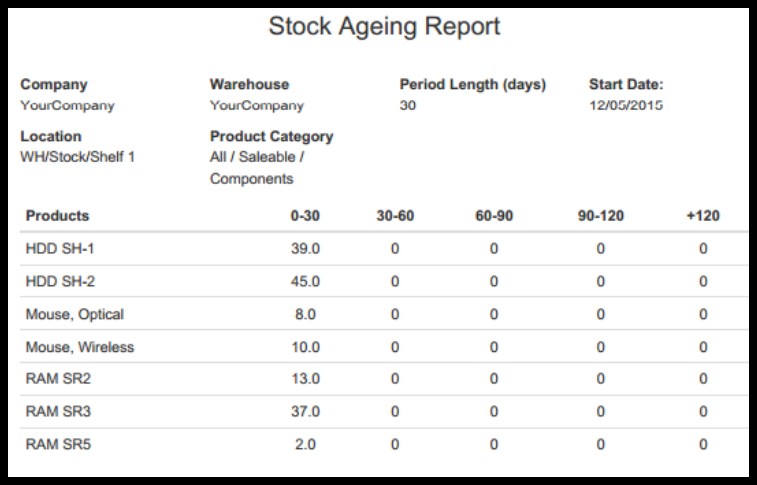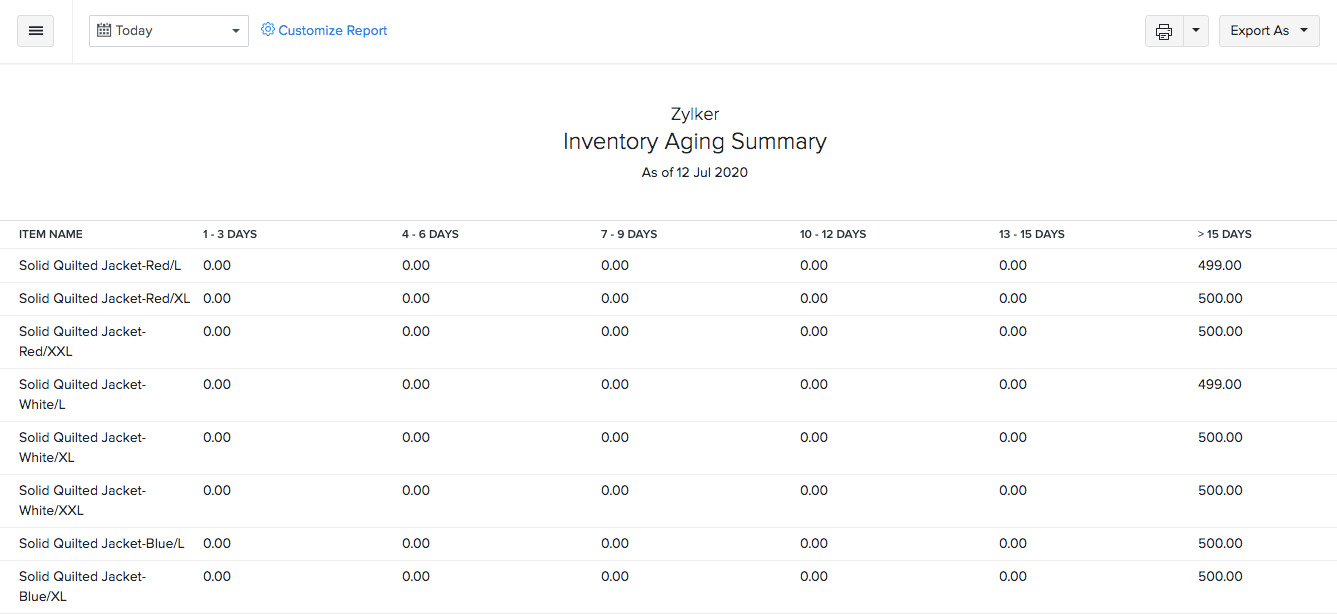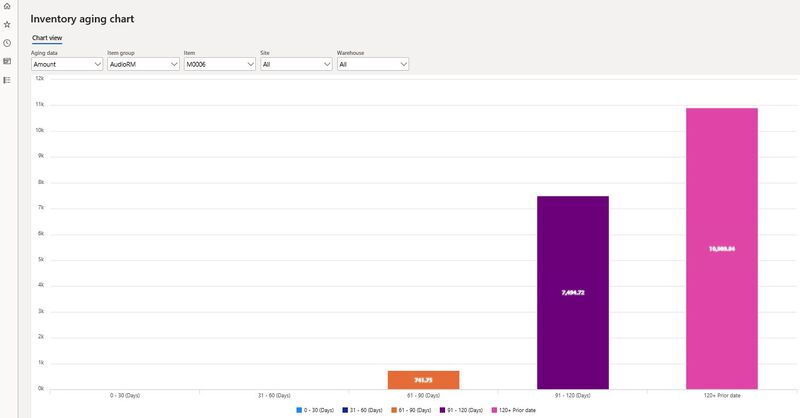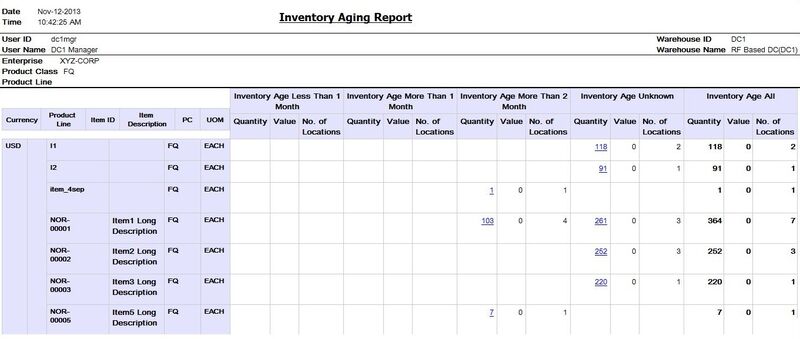An inventory aging report—also called an aged inventory report or stock aging report—is a financial document that provides key metrics on how quickly your inventory moves.
What Is Inventory Aging Report & Why It Matters
This article is part of a larger series on Bookkeeping.
The report is essentially a list of the items on hand, grouped by the length of time in inventory. It helps with
- Identifying slow-moving and nonmoving products: The report highlights products that are either slow to move or not moving out of inventory. It helps you determine why certain products sit in inventory longer than others, which, in turn, helps you identify what products to order in the future.
- Improving the decision-making on inventory purchases: Knowing which products aren’t moving out of inventory allows the purchasing department to place orders for products that sell quickly and reduces or eliminates slow-moving products.
- Giving insight into additional costs: The longer products sit in inventory, the more it costs to keep them in a “saleable” condition. Storing products for a long time can become costly, plus nonmoving products limit the space available for fast-selling products.
- Preventing stockouts: Inventory aging helps maintain optimal inventory levels to avoid a stockout.
- Quantifying the cost of maintaining inventory for long periods: If you are paying storage fees or dealing with limited space, inventory aging will help you determine its cost in the long term.
Sample Inventory Aging Reports
The sample inventory aging report below reveals key financial data that can be used to evaluate the overall financial health of your business. It was generated in Odoo, a free open-source suite of business tools.

The above report includes each product listed on the left and the number of units in inventory grouped in 30-day increments. According to this report, all inventory items have been sitting in inventory for less than 30 days as of December 5, 2015, as indicated by the first column.
Another exceptional inventory management software is Zoho, which we selected as the overall best inventory management software. The inventory summary report shown below gives a rundown of the number of days you’ve been holding stock. It includes the item name and product description on the left.

Inventory Aging Summary generated in Zoho
In contrast to the report generated in Odoo, Zoho’s report categorizes inventory items into six main groups, aged from:
- One to three days
- Four to six days
- Seven to nine days
- 10 to 12 days
- 13 to 15 days; and
- 16 or more days
How to Read the Inventory Aging Report
An inventory aging report may look similar to the more commonly used accounts receivable (A/R) aging report, with columns for aging “buckets,” such as 1 to 30 days or 30 to 60 days. It might include details such as the style or item number, warehouse, quantity, pending transactions, and availability to sell.
When you view the report, examine each age bucket and how much it contributes to your total stock on hand. Ideally, you want to have most of your stock in the first two buckets or below six months. This means you have more fresh stock than aged stock and most of your stock sells at full price or higher margins.
In the sample report above, you’ll see that all of the stock is in the 0-to-30-day age bucket. You can also look at the buckets at a higher age to see how much they’re contributing to your stock mix and then use this knowledge to manage your aging inventory.
The inventory aging report can also be shown in the form of a chart, such as the one generated by Microsoft Dynamics 365:

Inventory aging chart generated in Microsoft Dynamics 365
Using the Inventory Aging Report
You should use the inventory aging report to:
- Identify obsolete inventory: Use the inventory aging report to determine how long inventory has been held for sale and compare that to your expectations. If you don’t think the inventory will ever sell, then it should be written off the books and an expense recorded.
- Choose inventory to discount: Some old inventory may not be obsolete, but customers aren’t willing to pay your asking price. Consider discounting these items to free up space and cash for new inventory. While counter-intuitive, you might even discount them below your purchase price just to get rid of them to make room for new inventory.
- Project cash flow: One component of cash flow projections is cash received for the sale of inventory. The projections might have to be adjusted after making discounting decisions and adjusting your expectations for how long it will take to sell your current inventory.
- Make purchasing decisions: The inventory aging report has big implications for your purchasing decisions. Don’t purchase items that have been sitting in inventory for a long time. You also want to avoid purchasing items you’ve had to discount in order to sell.
- Analyze your investment in inventory: You achieve the highest return on investment in your inventory when your inventory sells quickly. Inventory that sells more slowly must have a higher markup to make up for the longer holder period. The inventory aging report is a great source for seeing how long your investment in inventory is being held before turning it into cash flow.
Generating an Inventory Aging Report
Depending on your accounting software, you can either generate a report automatically or retrieve the data and compile the report manually. While the inventory aging report isn’t common in accounting platforms for small businesses, it’s often found in tools ideal for midsize to large companies. For example, IBM allows you to generate one.

Inventory Aging Report generated by IBM
Additionally, starting with QuickBooks Enterprise Platinum Edition 2021, you can access two inventory reports showing the value of stock items, categorized based on their aging since purchase or acquisition. These reports, called Inventory Aging Summary and Inventory Aging Detail, provide information such as age, acquisition value, quantity, and average days in stock of each inventory or assembly item. For more information, read our QuickBooks Enterprise review.
Frequently Asked Questions (FAQs)
An inventory aging report is a financial document that shows how long items have been sitting in inventory. It categorizes inventory based on its age and provides insights into slow-moving and obsolete stock.
An aged inventory report—also called an inventory aging report—includes the item code or description, quantity on hand, total value, age categories (e.g., 0-30 days and 31-60 days), and value by age category.
An inventory aging report doesn’t consider product life cycles; some products naturally have longer inventory holding periods. It also relies on data being accurate, so inaccurate inventory data can have misleading results. It doesn’t account for quality issues, and product defects or damage can affect inventory age.
Most inventory management software offers built-in tools for generating aging reports, often with customizable parameters. These systems can also track inventory movement, calculate turnover ratios, and provide alerts for slow-moving or obsolete items.
Neglecting to monitor and manage aging inventory can significantly impact a business. Storing excess inventory incurs expenses for storage, insurance, and handling. Slow-moving and obsolete inventory ties up capital that could be invested elsewhere and items that become completely obsolete must be written off as a loss. In addition, stockouts can occur if fast-moving items are obscured by slow-moving stock.
Bottom Line
Now that you’re more familiar with what an inventory aging report is and why it’s important, you should take the necessary steps to generate one for your business. It’ll be useful for monitoring your company’s financial health and allowing you to make informed decisions about what inventory to purchase in the future.


